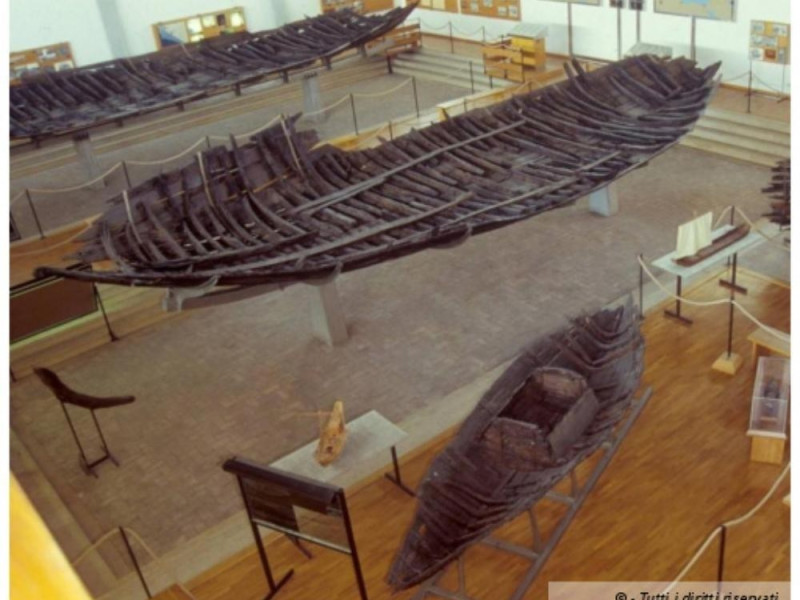Museo delle Navi
Inside the Ship Museum are exposed the remains of five boats (more fragments of the side of the other two), dating from the second to the fifth century AD. The wrecks were brought to light between 1958 and 1965 during the construction of the international airport "Leonardo da Vinci".
The boats are kept only the structures of the fund that held by marine sediments, have resisted the destructive action of water and marine flora and fauna. The ships were located within the port built by Emperor Claudius, in the first century AD, in an area between the place of construction of the museum and the remains of the northern pier of the port basin. In this area, located in a marginal position and subject to silting, was a real "naval cemetery" where the boats were abandoned too battered to still pay service. Of the five boats better preserved, two (Fiumicino 1 and 2) are identified by the caudicariae naves known from ancient sources. The caudicarie, sort of big river barges, were used to transport goods from the seaport to the river ports of Rome. These barges, without sails, were towed by ropes by men (the helciarii, quoted from classical sources) or by oxen which proceeded on the bank of the Tiber. This propulsion system, called haulage, was used until the late nineteenth century. Even Fiumicino 3 is a kind of river boat but smaller than the previous. Fiumicino 4, originally equipped with a square sail, is instead a vessel suitable for a maritime cabotage or an activity of coastal fisheries. The latter activity was also used as the small "Boat Fisherman" (Fiumicino 5) equipped with a central nursery for fish transport. The bottom of the hull was, in fact, drilled at the nursery, in order to allow the internal circulation of water and thus keep alive the catch. Inside the museum are also exposed numerous objects related to the life and equipment on board as well as the types of materials that are transported by sea, arrived at the port of Rome (amphorae, marble, etc.).


